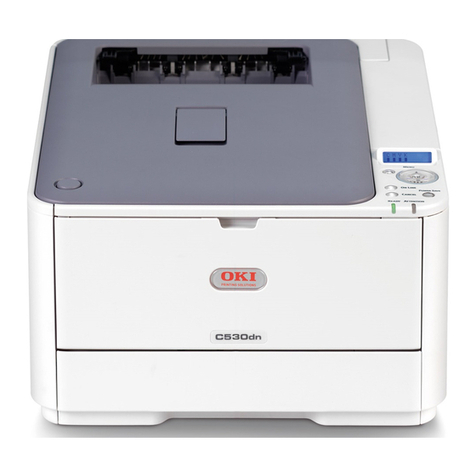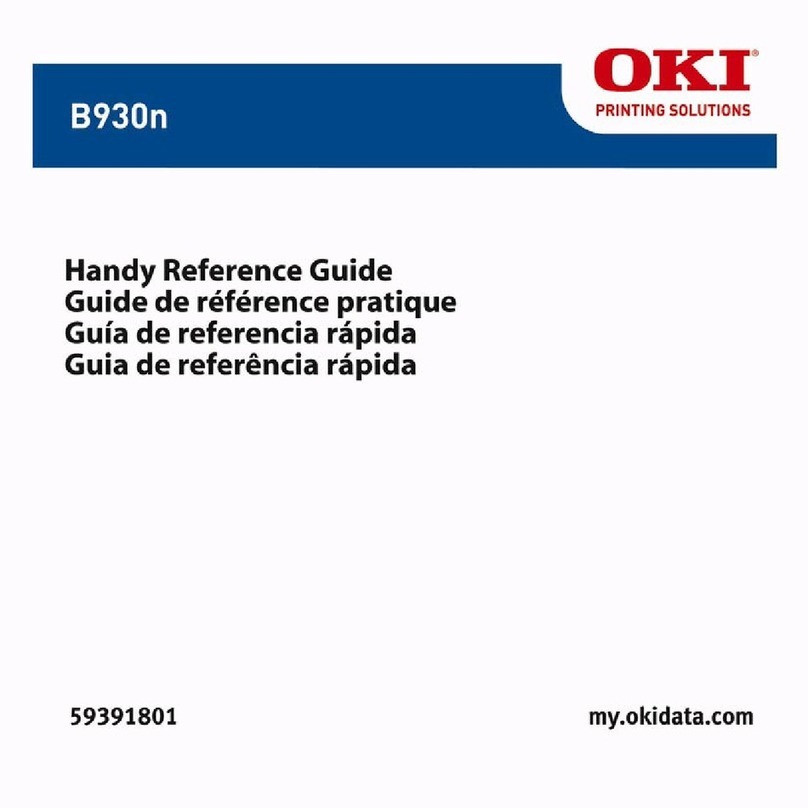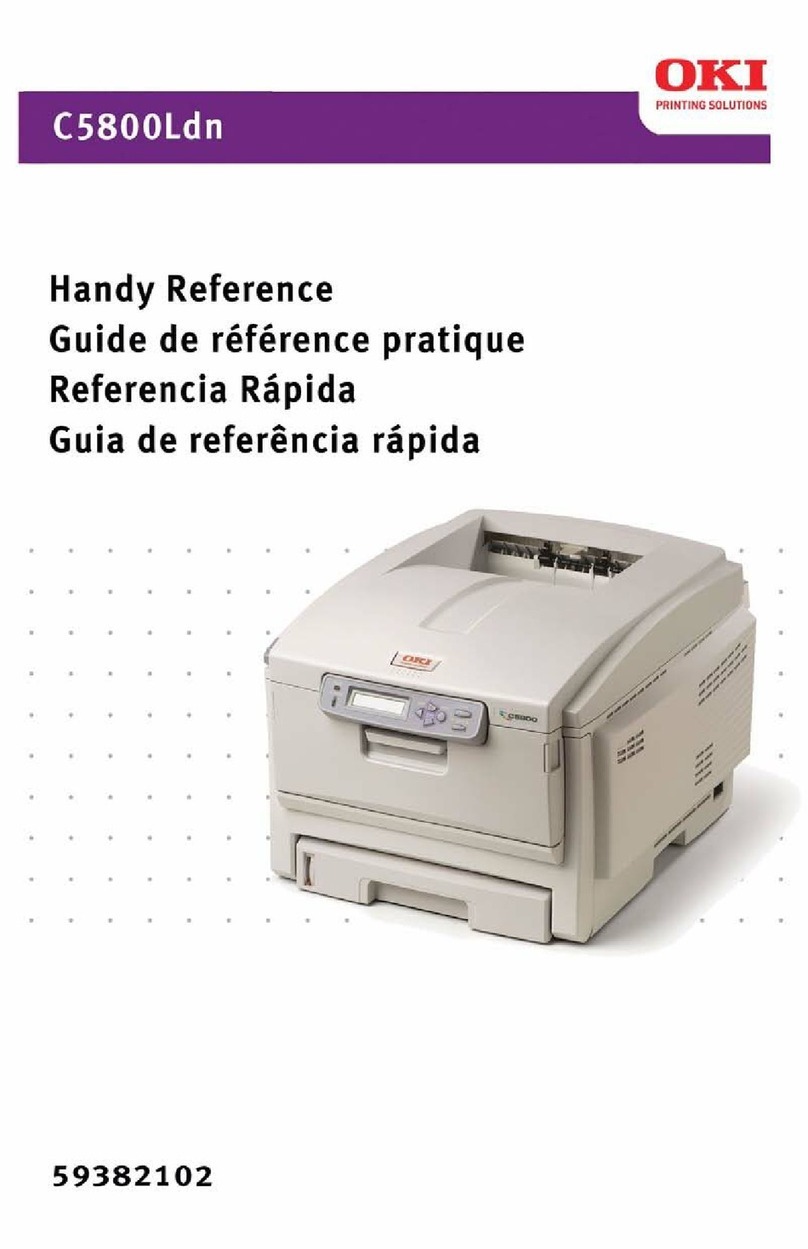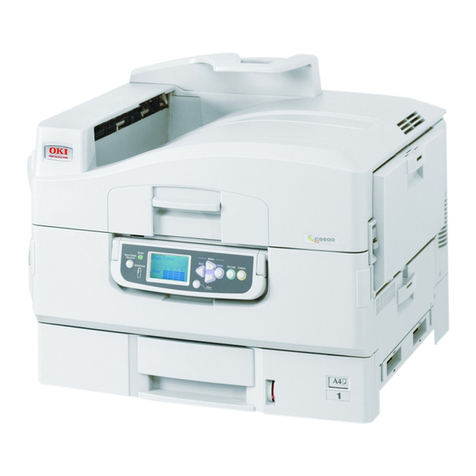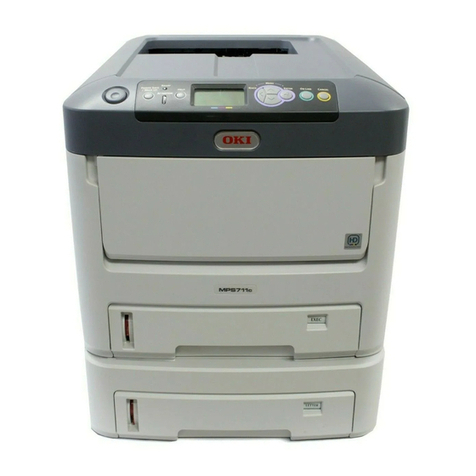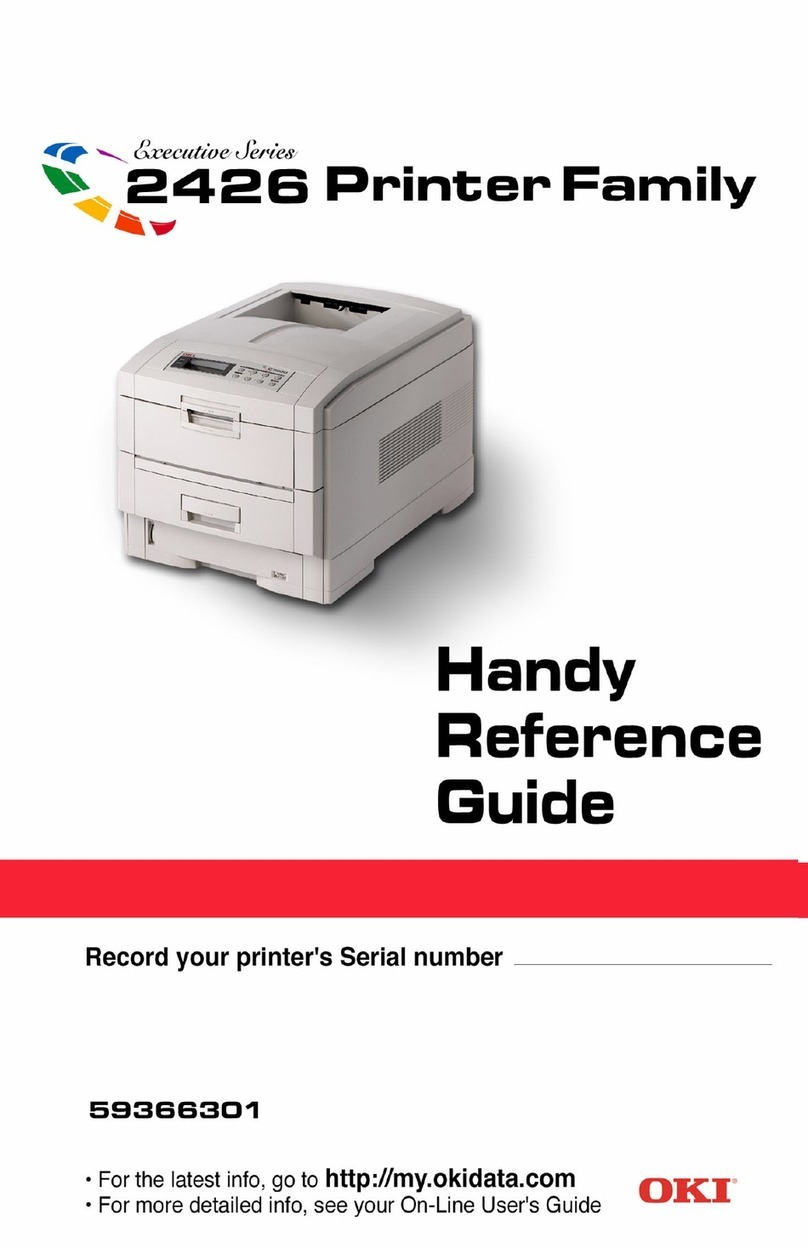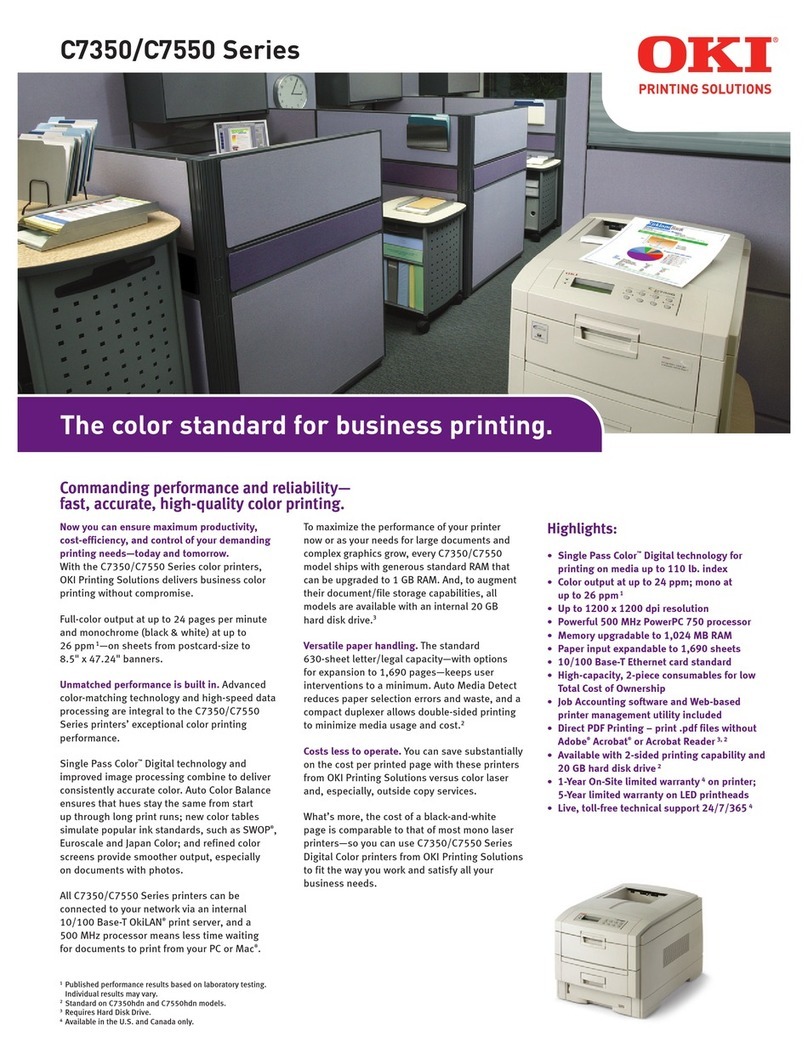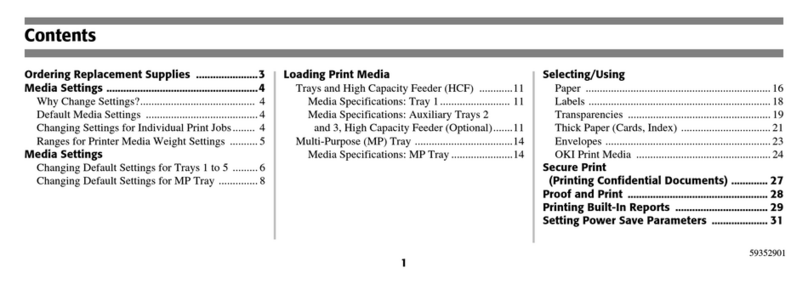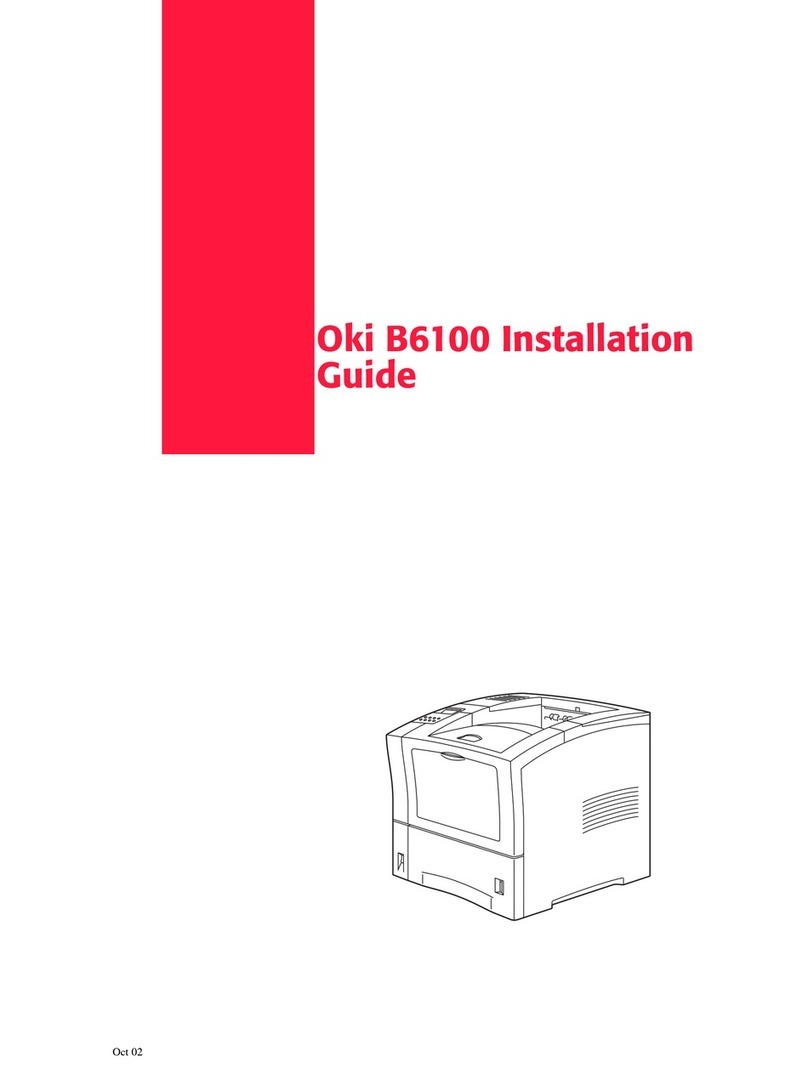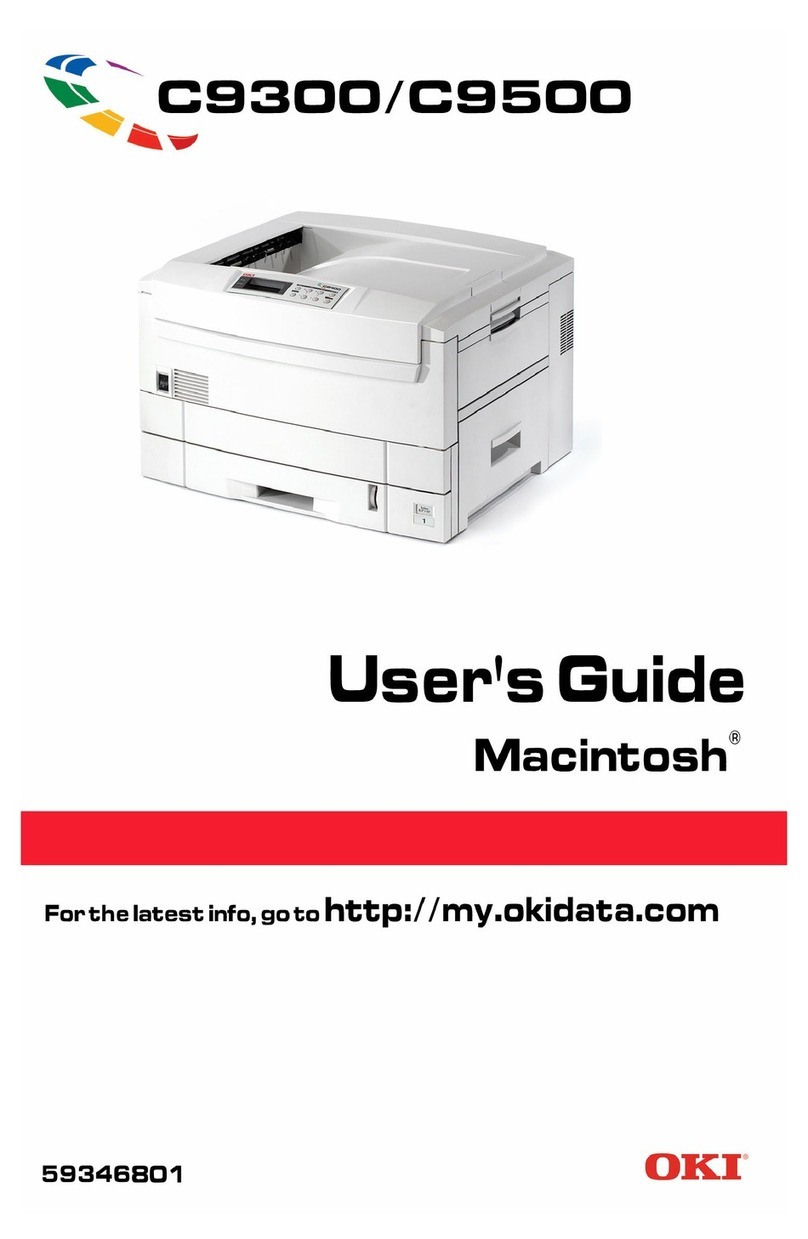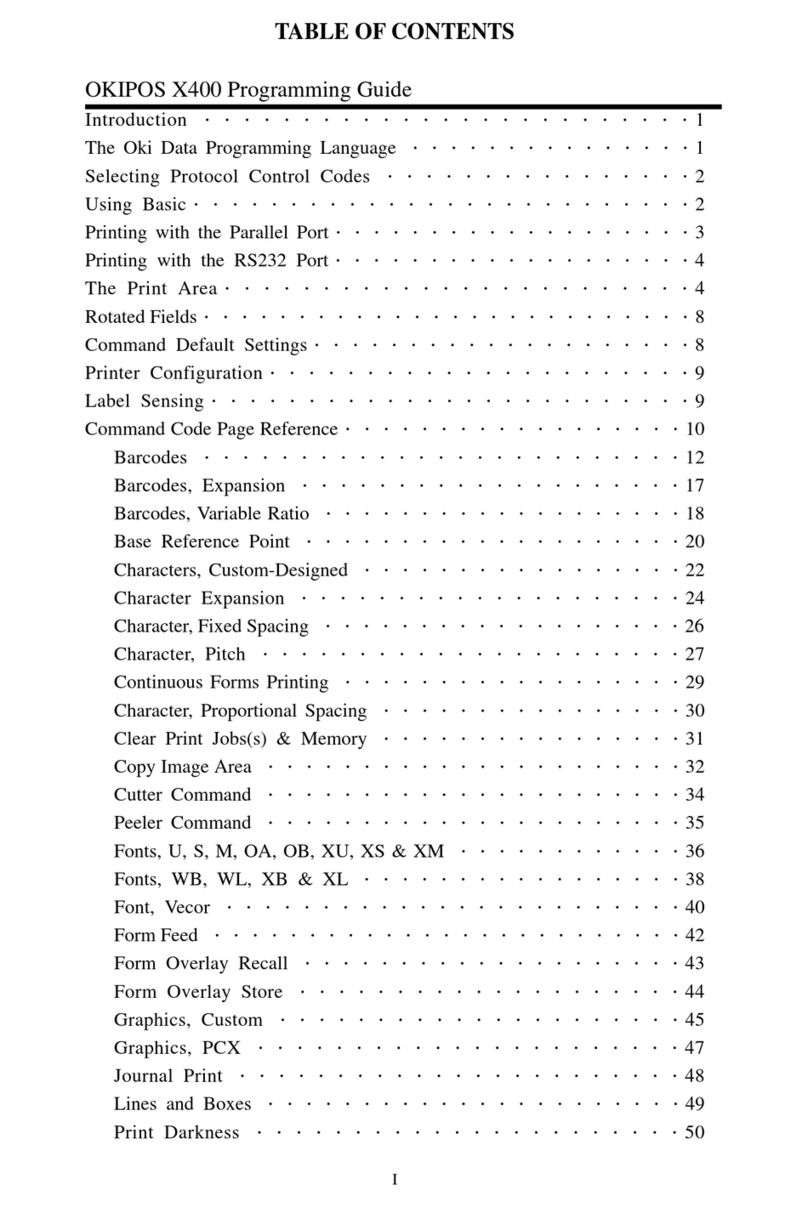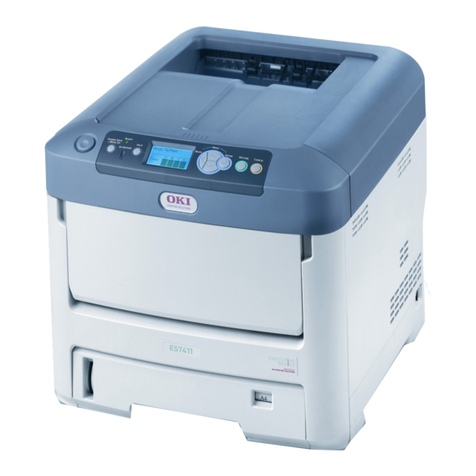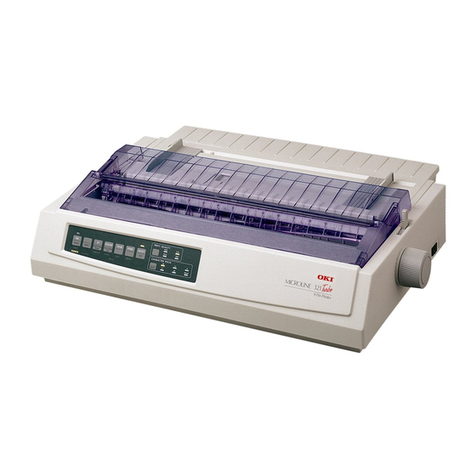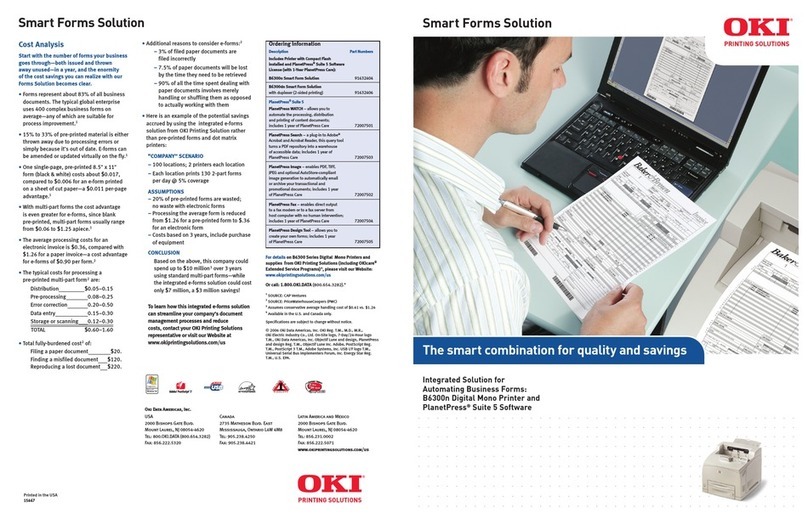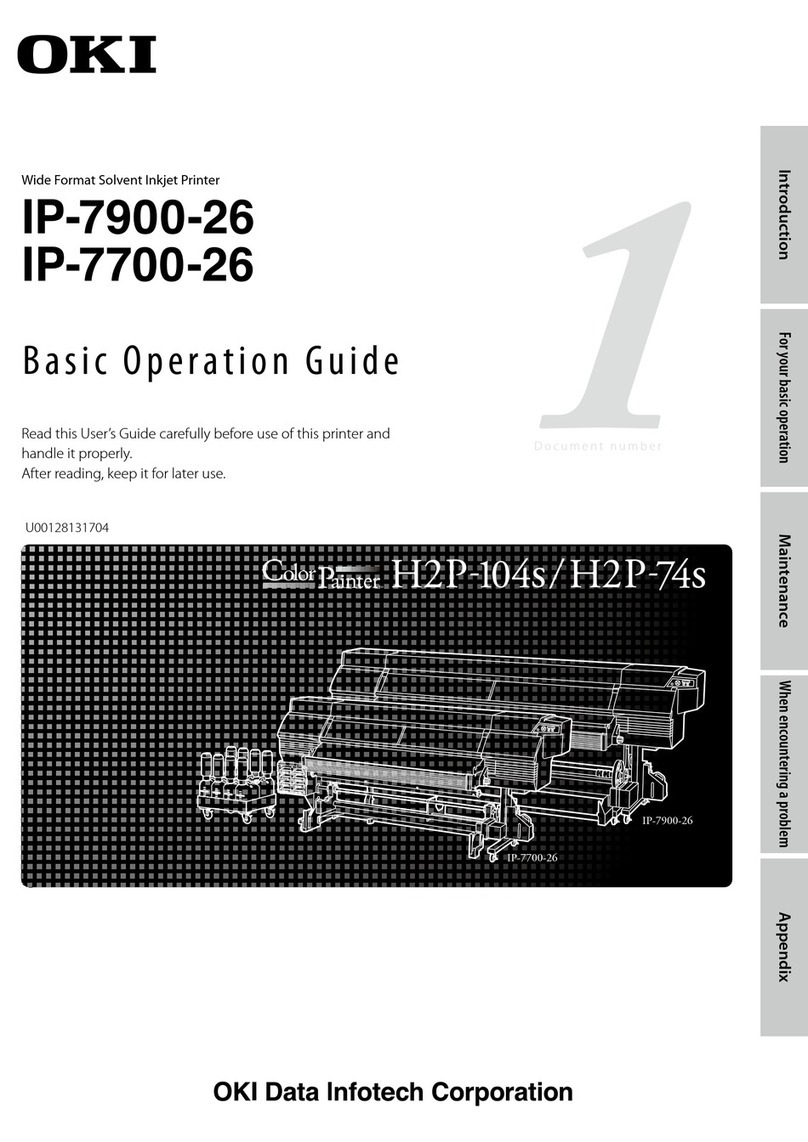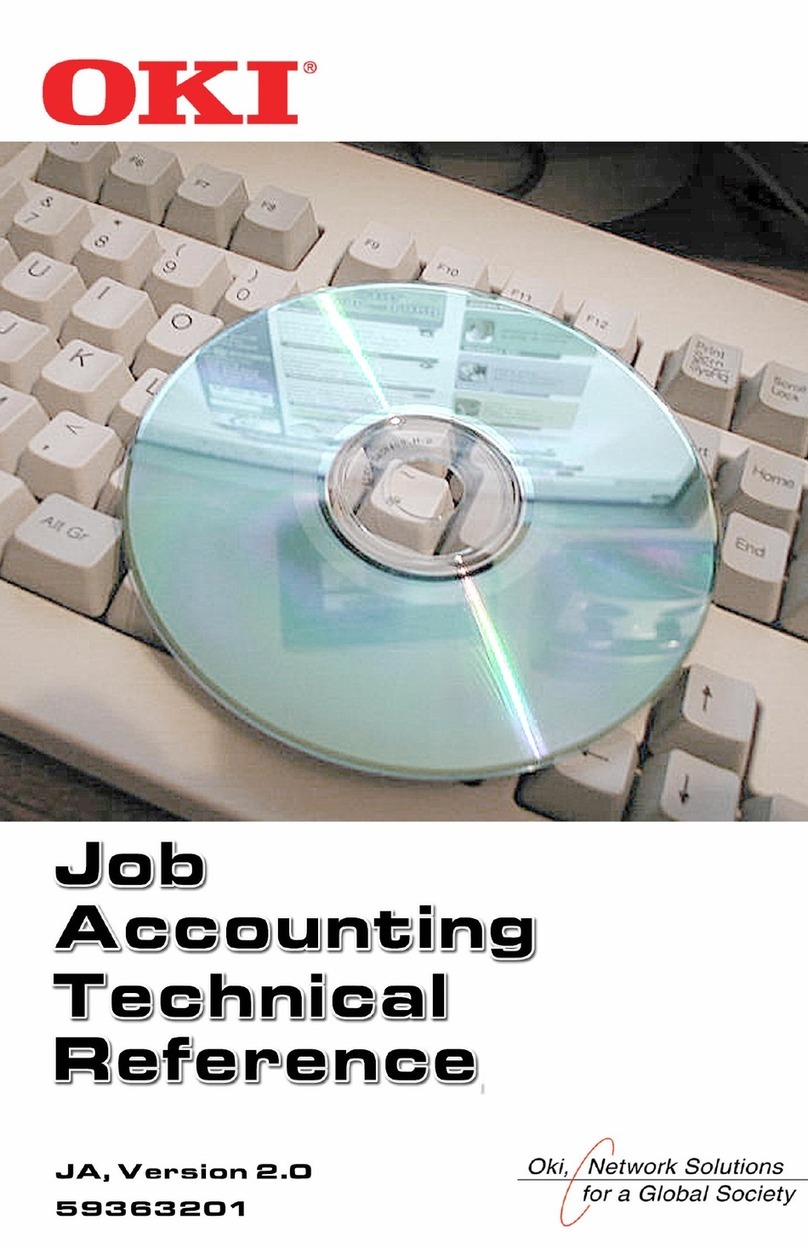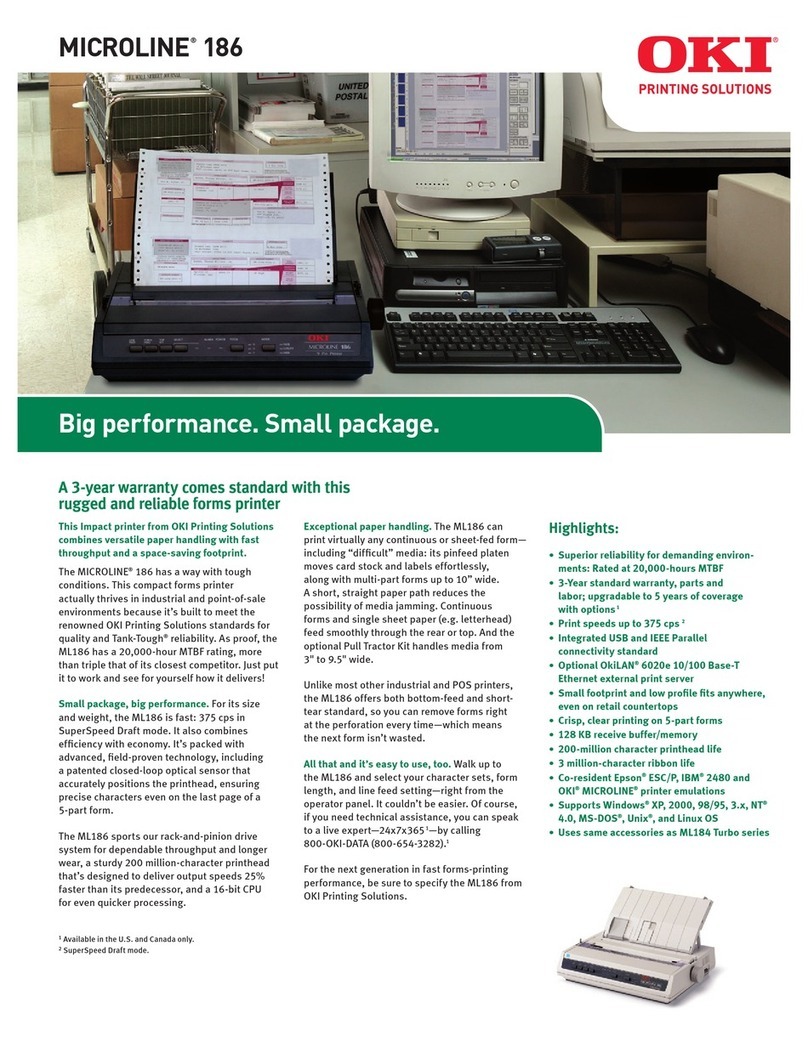40990901TH Rev.1 4 /
3. CIRCUIT DESCRIPTION
3.1 Outline
ThemaincontrolboardcontrolsthereceptionofdatatransferredthroughahostI/Fandprocesses
commandanalysis,bitimagedevelopment,rasterbufferread.Italsocontrolstheengineandthe
operator panel. Its block diagram is shown in Fig. 3-1 .
(1) Reception control
The OKIPAGE 10ex Printer can be equipped with one I/F port by adding an RS232C I/F
option board in addition to the Centronics I/F on the main control board.
Either of the two I/F ports which receives data first can be used automatically.
The other I/F port outputs a busy state signal.
The parallel I/F port can specify the following item when set by the control panel:
I-PRIME: Enabled/Disabled
The serial I/F port can specify the following item when set by the control panel:
Flow control : DTRHI/DTR LO/XONXOFF/RBSTXON
Baud rate : 300/600/1200/2400/4800/9600/19200 (Baud)
Data bit : 7/8 (bits)
Minimum busy time : 200/1000 (ms)
Parity : NONE/ODD/EVEN
An interface task stores all data received from the host into a receive buffer first.
(2) Command analysis processing
The OKIPAGE 10ex Printer support PCL6 (Hewlett Packard LJ6P compatible).
Anedittaskfetchesdatafromthereceivebuffer,analyzescommands,andreconstructsthe
data in such a way that print data are aligned from up to down and from right to left; then it
writestheresultantdataintoapagebufferwithsuchcontroldataasprintpositioncoordinate,
font type, etc. added.
(3) Font Processing
Whenonepageeditingisfinished,adevelopingtaskmakesanenginestartandfetchesdata
from the page buffer synchronizing with a printing operation, then it developes the fetched
datatoabitmapasreferringtodatafromacharactergenerator,andwritestheresultantdata
into the raster buffer (of band buffer structure).
(4) Raster buffer read.
As controlling the engine operation, an engine task sends data from the raster buffer to the
LED head.
